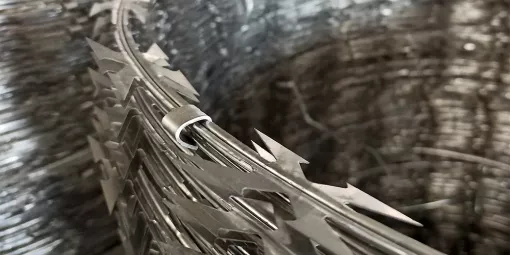Purchasing Egoza Barriers: What You Need to Know
Purchasing Egoza barriers is not just about ordering razor wire. It’s a process of selecting, calculating, assembling, and coordinating every detail – from choosing the type of barrier to selecting the fastening method and arranging delivery to the site. A well-informed approach impacts not only the price and durability but also the actual effectiveness of the perimeter security system. Whether you need a few dozen meters or tens of kilometers, it’s essential to assess all key parameters in advance that affect cost, installation, and operation.
What Affects the Product Price
The price of Egoza razor wire depends on numerous factors: spiral diameter, number of clips, tape thickness, type of steel, and level of corrosion protection. The pricing page explains in detail how each feature can increase or decrease the total cost. For example, a concertina wire with three clips and galvanized tape is a budget option. Stainless tape with seven clips for use in aggressive environments costs more but lasts significantly longer.
Pricing also includes logistics, packaging, non-standard configurations, labeling, and project support services. Therefore, the final amount depends not only on the product specifications but also on additional supply conditions.
Benefits of Bulk Purchases
Bulk purchases qualify for significant discounts and priority logistics. Wholesale deliveries of Egoza are arranged based on the project’s technical specifications. The manufacturer assembles the full batch – selecting the diameter, coil length, type of connections, fasteners, and packaging. Product labeling, documentation in the required language, and customs preparation can also be included.
Bulk ordering isn’t just about cost per meter – it’s an opportunity to receive a ready-made technical solution and save time and resources during project implementation.
How to Choose the Right Type of Barrier
Selecting the right type of Egoza barrier depends on the installation site, terrain, climate, available support structures, and required security level. The selection guide provides a step-by-step process – from basic questions (“Where will it be installed?”) to technical parameters (“What diameter and material?”).
For example, if a fence is already in place, a small-diameter spiral is sufficient. For open areas, a pyramidal barrier or large-diameter concertina wire installed on the ground is recommended. For temporary applications, mobile solutions – including vehicle-deployed barriers – are ideal.
Additional Parameters to Consider
In addition to basic specifications, consider the following:
- Availability of mounting surfaces (fence, ground, or combined);
- Required service life and corrosion resistance;
- Environmental factors (humidity, salt, dust);
- Site geometry, linearity, and perimeter length;
- Whether installation will be done in-house or by contractors;
- Need for mobility or rapid deployment.
Taking these factors into account early on will ensure accurate calculations and prevent costly rework or replacements.
Purchasing Egoza Is a Technically Informed Process
Buying Egoza barriers is a technical process that begins with product selection and ends with delivery to the site. It must consider the type of terrain, climate conditions, installation method, protection requirements, and expected service life. For large-scale projects, bulk purchasing is the best option. For non-standard sites, combined solutions may be required.
We recommend starting with the barrier selection guide and the pricing explanation, followed by calculating volume, packaging, and logistics. If needed, the manufacturer or supplier can provide a commercial offer tailored to all your project’s specifics.


